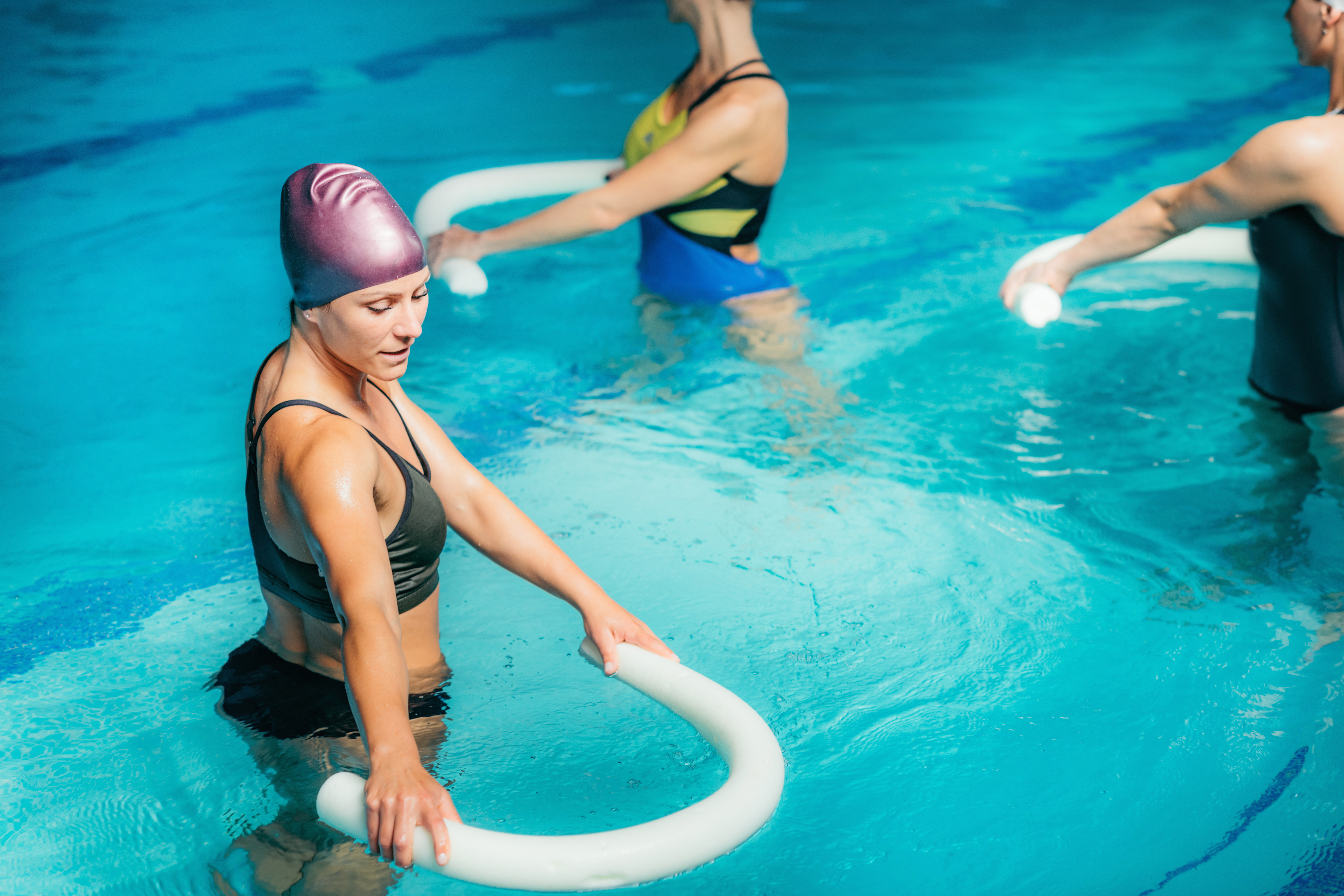Aquatic exercise: Why in the water?
For some individuals, exercising in the pool is their ticket to achieving their therapy goals. Whether it be helping manage low back pain, to supporting light aerobic training, stretching out tight muscles, or even being involved in a social aqua-therapy group – there are many benefits of accessing the pool for regular physical activity to support physical, emotional, and overall health and wellbeing. But what is so special about hydrotherapy?
Why hydrotherapy pools are effective
There are several inherent qualities of the water that make it a suitable (and sometimes superior!) environment to exercise in:
Heat – Hydrotherapy pools specifically are heated to a warmer temperature than typical indoor pools – approximately 34-35 degrees C. The warmth of the water helps support relaxation, pain relief, and reducing tone in tight muscles (such as for individuals with cerebral palsy).
Buoyancy – the ability to float is not the only benefit of buoyancy; the deeper you are in the water, the more weightless you are. This means that you can complete movements that you would otherwise find difficult on land by reducing weightbearing through painful lower limbs and spine.
Hydrostatic pressure – the water acts as a compressive medium to help reduce oedema (swelling), while also improving lung volume for individuals with respiratory issues through strengthening muscles of respiration.
Resistance – also known as drag, means that completing even simple movements in the water will support muscle strengthening greater than when on land. Increasing the speed of movements increases the force of resistance; you can also use equipment such as kickboards to increase the surface area, thereby increasing drag.
Benefits of exercising in the pool
Just to name a few:
1. FUN! Provides play-based environment for paediatric participants AND is engaging for adults
2. Improving social interaction/engagement – exercising with like-minded individuals in the pool setting, especially through attending group aqua-fit/aerobics classes.
3. Reduced loadbearing on painful joints, enabling you to move with greater confidence.
4. Freedom of movement due to heat and the supportive medium of the water.
Physiotherapist’s role in aquatic exercise
Guidance from a physiotherapist will ensure your aquatic exercise sessions targets your individual needs and preferences, helping you get the most out of your pool visits. Physiotherapy can support with:
1. Development of an aquatic exercise program – the hydrotherapy setting is a great place to train muscle strength, with the inherent resistance of the water promoting strengthening while supporting painful joints. It is also a great place to complete balance training, with the water negating the risk of injuries should you lose your balance.
2. Complete a thorough risk assessment prior to entering – it is important to note that some medical conditions are at risk of being exacerbated within the pool environment. Your physiotherapist will take a detailed history and liaise with your medical team to help ensure your safety, while helping develop an action plan to help mitigate any potential risks.
3. Assess your capacity to get in/out of the pool – your physiotherapist will assess your mobility/transfer capacity and determine need for relevant aids to help you enter and exit the water, including ramp vs. stairs, use of an aquatic wheelchair, or hoist transfers.
4. Supporting prescription of appropriate equipment – this might include floatation aids (from neck collars to pool noodles to floatation mats) to support buoyancy, aquatic dumbbells/cuff weights, or even suitable swimwear relevant to your needs.
Physiotherapists can provide support in the environment that works best for your individual needs and preferences – whether it be at home, in the pool, the gym or at the park. If you are curious about hydrotherapy, speak to your physiotherapist about what exercising in the water might look like for you!
About the author
Tristan Brown is a Clinical Excellence Lead and Physiotherapist at KEO. With over 6 years of experience in clinical practice, Tristan is responsible for supporting a diverse community caseload which includes psychosocial participants, elderly clients and paediatrics.
Tristan appreciates being a member of a robust multidisciplinary team and loves delivering education and learning from his fellow team members. His approach to practice is creative and collaborative, so he and his KEO colleagues can work effectively together towards the best outcomes.
